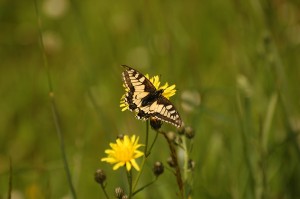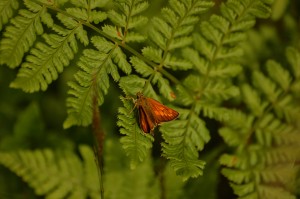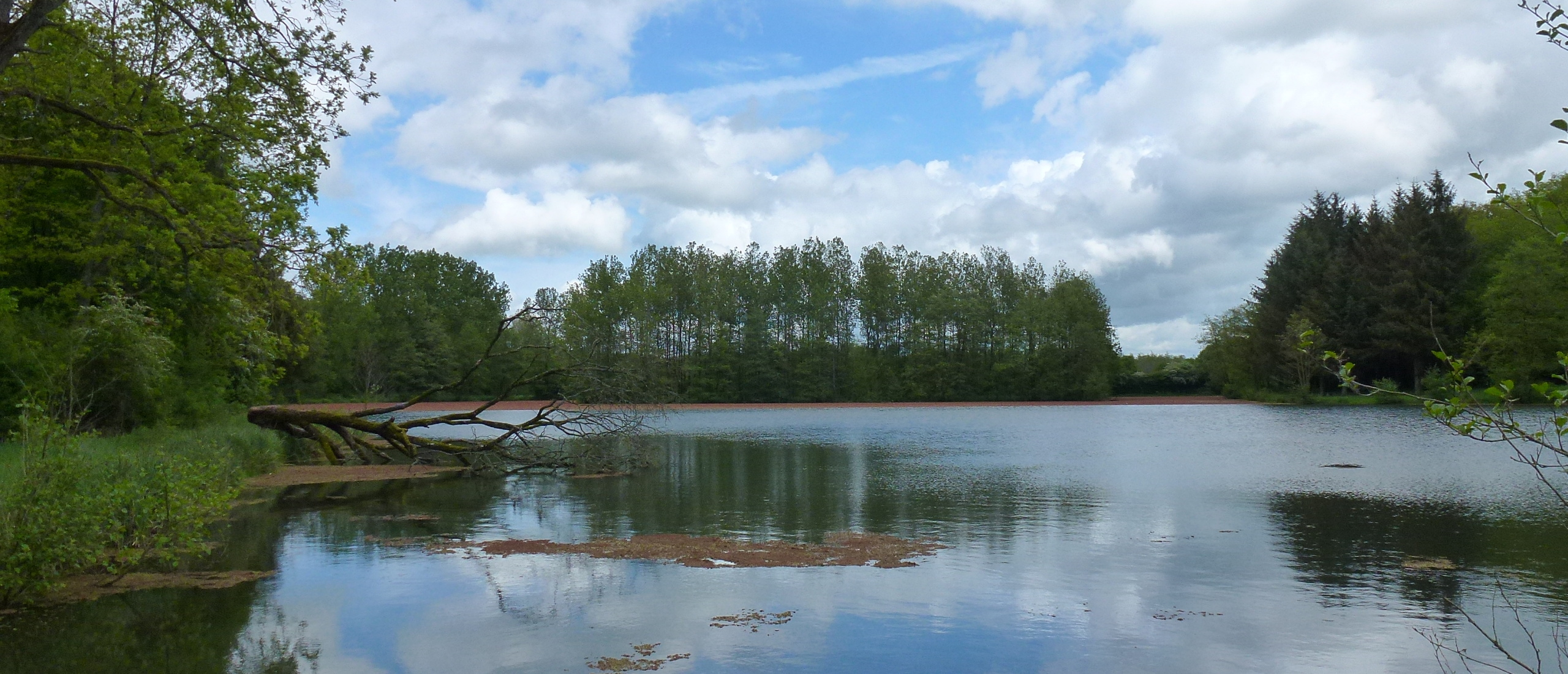
Butterfly list reaches 51....on my 51st birthday weekend! Yesterday, 31st May, involved another annual pilgrimage, this time to the gorgeous juniper-covered hillsides around the picturesque village of Alendorf, in the Eifel region of Germany. This unique landscape, with its grassy slopes dotted with innumerable juniper bushes, so neatly spaced (this is Germany, after all!) that they almost look as though they have been planted, is one of my most favoured butterfly haunts, and yesterday was no exception; I ended up seeing 26 species in the day, and raising my 2014 total to 50!
The first really interesting addition was perhaps not the most visually spectacular of all butterflies, a member of the difficult Grizzled Skipper group. I am 95% sure that it was a Large Grizzled Skipper, Pyrgus alveus, but there is a small possibility of Oberthür's Grizzled Skipper, P. armoricanus (named by one of my great grandfather G C Champion's greatest entomological friends, Charles Oberthür, in 1910). Further investigation is required!
 The mystery butterfly - is it Large or Oberthur's Grizzled Skipper?
The mystery butterfly - is it Large or Oberthur's Grizzled Skipper?
Other interesting species seen in the early part of the walk included numerous Walls, Lasiommata megera (a pleasant sight as this species is apparently on the decline), Red-underwing Skipper, Spialia sertorius, Black-veined White, Aporia crataegi, Berger's Clouded Yellow, Colias alfacariensis, Glanville Fritillary, Melitaea cinxia, and the 50th species for my 2014 list, Pearly Heath, Coenonympha arcania.
 A female Berger's Clouded Yellow takes the sun
A female Berger's Clouded Yellow takes the sun
 A Glanville Fritillary getting its fill of nectar
A Glanville Fritillary getting its fill of nectar
 The Pearly Heath's white band is very distinctive
The Pearly Heath's white band is very distinctive
Up on the more open ground above the juniper slopes, I was delighted to find at least five Swallowtails, Papilio machaon, chasing each other vigorously over the cropped turf, only pausing occasionally to rest (and be photographed). It is rare for me to meet so many Swallowtails together, and I enjoyed the sight for quite some time.
 This Swallowtail is not very artistically posed, but impressive nonetheless
This Swallowtail is not very artistically posed, but impressive nonetheless
It was precisely here, on 21st July 2006, that I took what is one of my favourite butterfly pictures ever, also of a Swallowtail, but posed far more beautifully on a background of ripening barley. Clearly this is a regular haunt of this, one of Europe's largest and most spectacular butterflies.
 A much more beautifully posed Swallowtail, photographed here in 2006
A much more beautifully posed Swallowtail, photographed here in 2006
Not only butterflies drew my attention on these delightful slopes. Orchids too were in evidence, especially the extraordinary Fly Orchid, Ophrys insectifera, which uses pheromones to attract insects, which then try to mate with the fly-like flowers, allowing the plant to deposit its pollen on the insect during its fruitless attempt.
 The extraordinarily insect-like Fly Orchid
The extraordinarily insect-like Fly Orchid
The middle section of this hillside had just been grazed by a flock of sheep, and sadly these voracious feeders had consumed virtually every single flower, rendering the habitat at least temporarily wholly unsuitable for butterflies. The sheep themselves had now been moved to a nearby area of grassland, one where in previous years I had seen numerous orchids. Apparently this type of management is carried out specifically for wildlife, and in the longer term it is supposed to benefit the wildflowers and butterflies too, but I do hope they are not over-grazing this highly sensitive habitat.
 A sign explaining the role of the sheep in protecting the wildlife
A sign explaining the role of the sheep in protecting the wildlife
From here the walk led through woodland and then downwards into a valley with flowery meadows, where a notice proclaimed the presence of both Violet Coppers, Lycaena helle, and Purple-edged Coppers, L. hippothoe, and indeed some bistort and sorrel, their larval host-plants, were present. However, despite plunging down through the long grass towards the main bistort area, I could not find either. However, unexpectedly I did find a lone female Sooty Copper, L. tityrus, which was a bonus.
 This female Sooty Copper was an unexpected find
This female Sooty Copper was an unexpected find
The final section led along more juniper-covered grassland, and here a rather washed-out Duke of Burgundy, Hamearis lucina, was feeding on a flower-head. This was a good find; after having thought that I might miss this highly localised species entirely in 2014, I have now seen it in France, Belgium and Germany.
 A rather faded Duke of Burgundy nectaring on a flower-head
A rather faded Duke of Burgundy nectaring on a flower-head
Along the bottom of the juniper slope, quite a number of Blues were flying, mainly Small Blues, Cupido minimus, Common Blues, Polyommatus icarus, and Brown Arguses, Aricia agestis, but my eyes were drawn to a more purplish individual, which turned out to be a freshly emerged male Mazarine Blue, Cyaniris semiargus. This species is easily recognised by the small black dots on a uniformly grey underside, and the purplish upperside with black veins crossing it.
 The black veins crossing the purplish upperside of this male Mazarine Blue can clearly be seen
The black veins crossing the purplish upperside of this male Mazarine Blue can clearly be seen
The final sighting of the day was a tail-less Swallowtail. These splendid butterflies are frequent targets of attack by birds, which somehow believe that the tails are the butterfly's antennae and the bluish eye-spots are its real eyes, and they therefore aim for this part, thinking it is the head. The butterfly then escapes, but minus its tails. Obviously this escape mechanism will only function once in the butterfly's life, but once is better than not at all.
 This Swallowtail escaped from a bird attack minus its tails, but with its life
This Swallowtail escaped from a bird attack minus its tails, but with its life
 Alendorf is one of the most fabulous butterfly areas I know
Alendorf is one of the most fabulous butterfly areas I know
Today, Sunday 1st June, has seen me back in the Hautes Fagnes, in eastern Belgium, where although it has not been a particularly butterfly-filled day, a lone male Large Skipper, Ochlodes venatus, brought my 2014 butterfly list up to 51 species - an appropriate number for my 51st birthday weekend!
 This male Large Skipper raised my list to 51 species
This male Large Skipper raised my list to 51 species
2014 total as of 1st June: 51 species.













